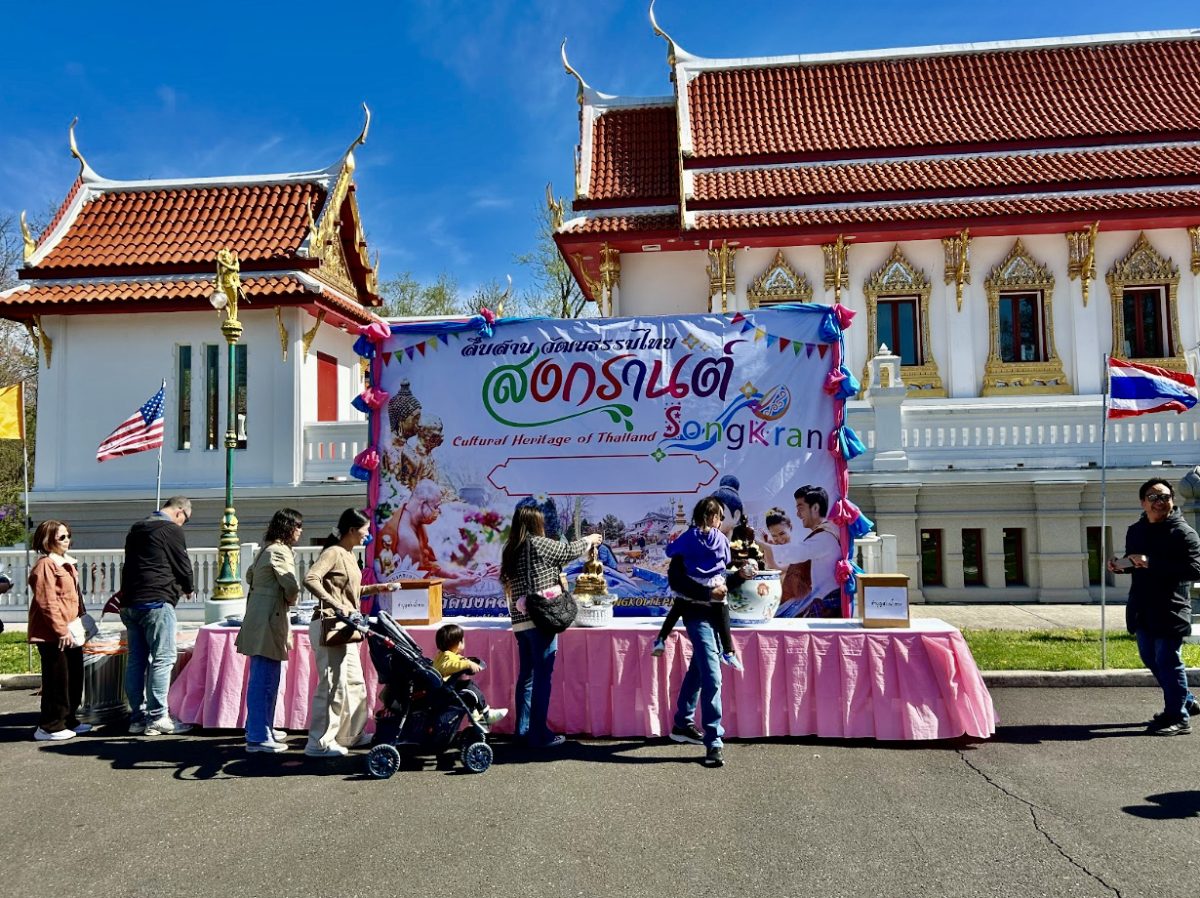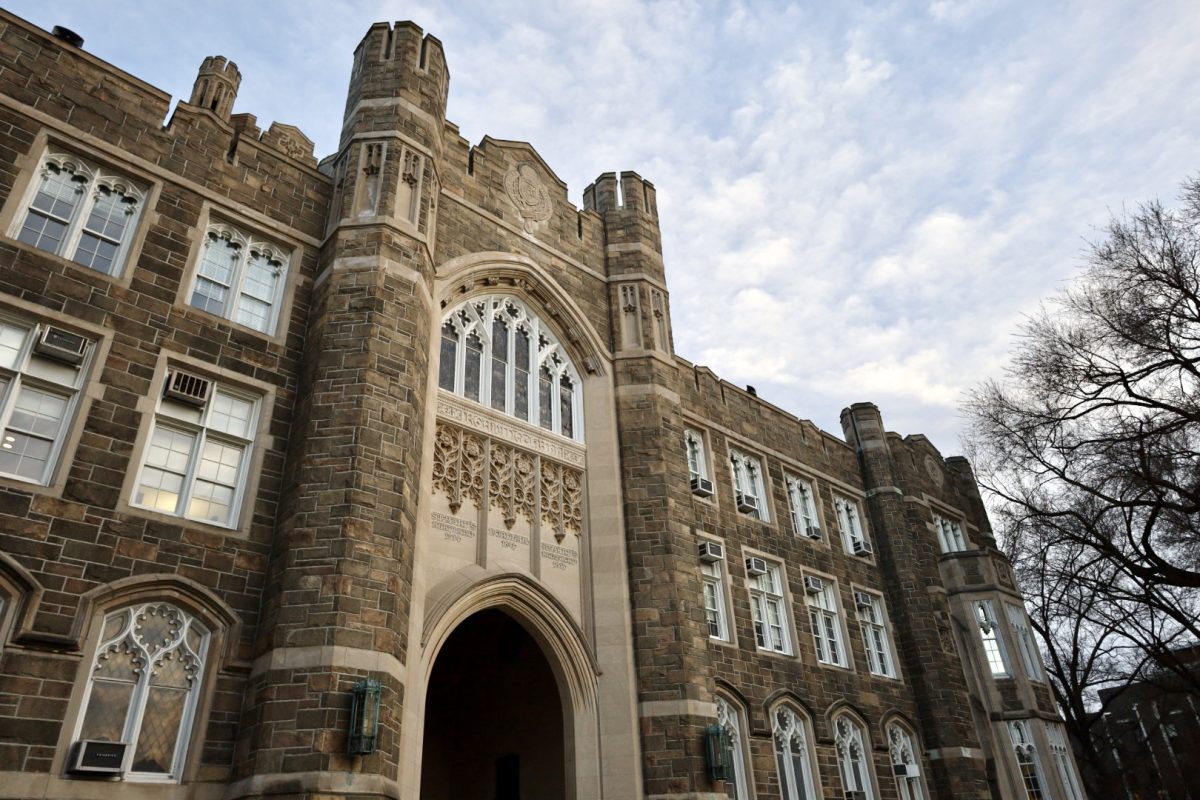April 13 is Songkran, also known as Thai New Year. It’s a celebration that lasts three days, April 13-15, in Thailand. It’s also celebrated in Thailand’s neighboring countries, Cambodia and Laos. At its core, Songkran is a water-splashing festival. People spray each other with water to symbolize washing the previous year away and welcoming the good fortune of the new year. During this time of year, it’s extremely hot in Thailand and Songkran is the perfect festival to help cool off. In fact, many people in Thailand will get off work for a full week to celebrate this holiday.
Here in the United States, our main celebration lasts one day, at least for most. It is on Sunday, which is the usual day for temples on any given week. I celebrated at Mongkoltepmunee Temple in Bensalem, Pa., where I’ve been going my whole life. There is a temple on the property that is built to look just like the ones in Thailand, a rare sight in the United States. Mongkoltepmunee Temple is the best one in the tri-state area with no competition. Many of the Thai temples here look ordinary on the outside, like Wat Buddhayaram, located in the Bronx, whose exterior is that of a “modest two-story home.”
There are many traditions that take place during Songkran and you can participate in them by donating money to the temple. One of my favorites from when I was younger was building sandcastles. To do this, you donate some money, say “Sādhu” and make a wish. You then grab a sand-filled cup, flip it over and stick a flag into it, and then again make a wish and say “Sādhu.” This phrase is a way to say thank you for the blessing. People can donate as little as a dollar up to as generous as they would like to be.
I spoke with the man who has managed this station for many years, Hansa Yimyam. He told me they raised over $1,300 from just the sandcastles last year and that they were hoping to do the same this year. It’s a genius way to get donations because there’s a one-time cost that is the purchase of the sand, cups, flags and stupa (bell-shaped tower) in which they place the sandcastles around. They are able to just break down the sandcastles and reuse them without incurring any additional costs. The activity still brings so much joy for generations to come. I think this is one of the most kid-friendly ways to immerse children in Thai culture.
When Hansa was asked about his favorite thing about the festival, he expressed, “Seeing people from all walks of life that come together to celebrate Thai New Year and seeing them give to the community. [Which then allows us] to continue to promote the temple that brings people together and Buddha’s teachings. Not only that, but we also try to spread the beauty of Thai culture and Thai language. And of course, the food, right? The best way to get to your heart is through your stomach.” I agree. Songkran is the biggest festival of the year at the temple. I talked to a woman that day who hadn’t visited in five years. She said it was the biggest celebration that she’d ever seen at the temple.
This year is particularly special because UNESCO inscribed the holiday on the Representative List of the Intangible Cultural Heritage of Humanity, meaning Songkran has finally been recognized as a unique Thai-originating holiday.
Another sacred tradition is Dak Bat, a morning food ritual where you donate money and grab a tray of food to give to the monks. You are even allowed to bring them food you make; this past Songkran, my great-aunt made some tofu for the monks.
The main event in our Thai-American version of the festival is the food, which takes place under tents outside. The food is scrumptious. The lines stretch far before serving time at 11:30 a.m. This time allows people to run into old friends and meet new people waiting in line. The food is free, thanks to the people who volunteer their time to make food and those who donate. Almost everyone who comes donates. They understand what a blessing that this temple brings for them. Thai people are a large minority in the U.S., so a place like this which is filled with Thai people and the air with Thai language brings a feeling of home that is longed for thousands of miles from the motherland.
This Songkran, my great-aunt, Amporn Aldridge, made a Ton Par Pa, a money tree that people make wishes on after donating. She provided a place for people to donate through which she was able to raise $1,200 for the temple with just her tree. There are usually two or three trees. When asked why she chose to make a Ton Par Pa she told me about how she hasn’t been back to the temple in a while. She knows how donations teach people to be good, share and follow the laws of Buddha. They raise money for the people who work hard and keep these traditions alive. Also, donating can be very fun for the little kids especially in the unique ways of the Thai temple.
Of course, there’s the water-splashing portion. Children were given water guns as they sprayed plants and each other. The monks sprayed us with nam mon, a tool made from bamboo, while those getting blessed bowed their heads for respect.
Every year that I come to this festival, I learn more and more each time. For example, each time I come back my mom points out a person and she tells me that they changed my diapers. There’s so much I have yet to learn, but I’m very glad that I have the privilege to be part of such a beautiful and accepting community. I can feel a lot like an impostor not knowing the language all that well. In order to change that, I’ve started taking the initiative of engaging with more people and learning their story. At the Mongkoltepmunee Temple, there’s substantial effort that goes on behind the scenes to keep the slice of home that is the temple afloat. The Songkran festival is not one to miss.







































































































































































































